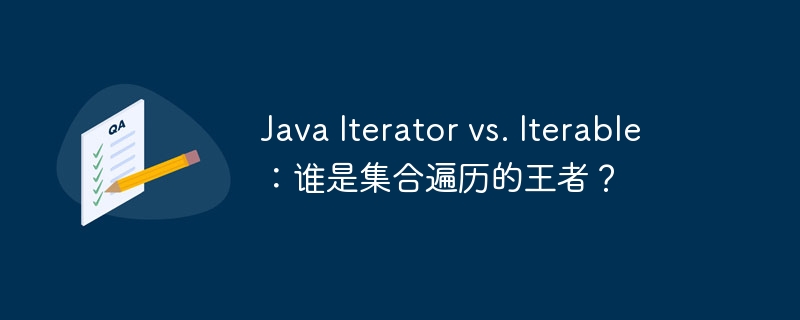

Iterator and Iterable in Java are both important interfaces for collection traversal, and they play a vital role in actual development. So, who is the king of set traversal? This article will reveal the answer for you and give you an in-depth understanding of the differences and connections between Iterator and Iterable in Java, as well as their respective characteristics and applicable scenarios. Let's explore the mysteries of these two important interfaces in Java!
Code Example
// 使用 Iterator 遍历集合 Listlist = Arrays.asList("A", "B", "C"); Iterator iterator = list.iterator(); while (iterator.hasNext()) { String element = iterator.next(); System.out.println(element); } // 使用 Iterable 遍历集合 List list = Arrays.asList("A", "B", "C"); for (String element : list) { System.out.println(element); }
Iterator and Iterable are two important interfaces for collection traversal in Java. An Iterator is a value iterator that points to a specific element in a collection. An Iterable is an object iterator that can be iterated over to access its elements. Generally, use Iterator when you need fine-grained control over a collection, and use Iterable when you need a simpler, more convenient way to traverse a collection.
The above is the detailed content of Java Iterator vs. Iterable: Who is the King of Collection Traversal?. For more information, please follow other related articles on the PHP Chinese website!
 Solution to Win7 folder properties not sharing tab page
Solution to Win7 folder properties not sharing tab page contextmenu
contextmenu How to use shuffle
How to use shuffle c/s architecture and b/s architecture
c/s architecture and b/s architecture How to use the length function in Matlab
How to use the length function in Matlab Excel table slash divided into two
Excel table slash divided into two How to remove watermark from clipping
How to remove watermark from clipping The difference between WeChat service account and official account
The difference between WeChat service account and official account



